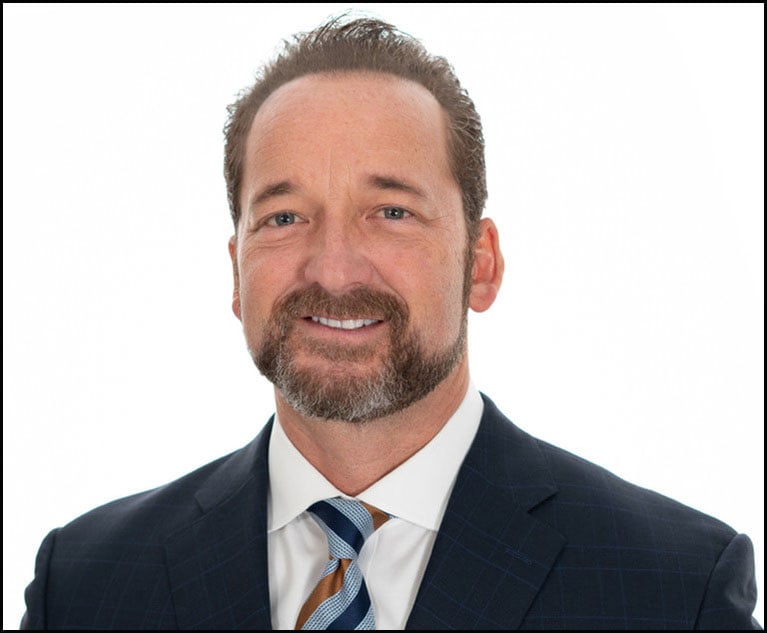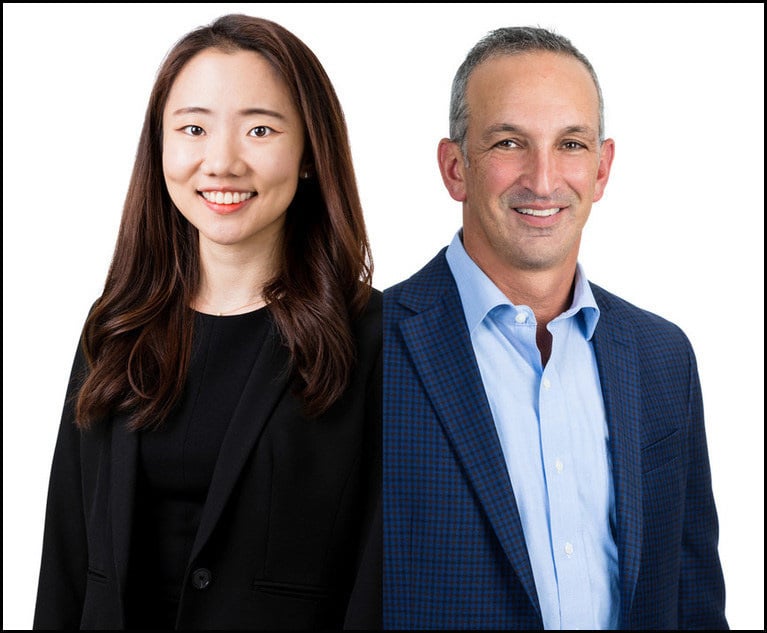 Credit: Shawn Hempel/Shutterstock.com
Credit: Shawn Hempel/Shutterstock.com The Hard Peace: Mediation in New York's Med-NJ Program
The Med-NJ Program, composed of one mediator and law student interns, is housed in New York County guided by Deputy Chief Administrative Judge for the City of New York, Deborah Kaplan. Med-NJ accepts multi-party commercial and construction matters, co-op/condo disputes and matrimonial cases, along with any other civil litigation.
November 19, 2021 at 02:10 PM
8 minute read
The story begins with a decision. The decision is to try to settle a dispute. Lawyers advise their clients to go to mediation for two reasons. First, the case is at an early stage and settlement looks advantageous in light of costly litigation. Second, one or both sides have already spent enough time and money in litigation to know that they want it to end. The decision leads to a chain of predictable events. On the day of the mediation, counsel and parties convene briefly in a joint session. This is followed by separate "caucus" sessions. Each side spends long stretches of the day waiting to hear what the other is offering and how far they will move. The negotiation is binary. Resolution is driven by assessment of continued cost and a subjective risk analysis of the case. In this format, there is no resolution to either the underlying conflict or the legal conflict. Rather, the question is whether one side has offered enough money for the other side to drop their claims. Often, resolution is made without real opportunity for parties to take advantage of mediation's strongest attribute—self-determination.
What if this story read differently? New York's Med-NJ Program (Mediation Non-Jury) is trying to answer this question. The Med-NJ Program, composed of one mediator and law student interns, is housed in New York County guided by Deputy Chief Administrative Judge for the City of New York, Deborah Kaplan. Med-NJ accepts multi-party commercial and construction matters, co-op/condo disputes and matrimonial cases, along with any other civil litigation. The Med-NJ Program operates with a mission statement of a sort—R.A.I.S.E. to a higher ground. The acronym stands for Recognition, Active listening and Acknowledgement, Insight, Solutions and End with Agreement. Although lofty, in practice these words are the operating instructions for how mediations at Med-NJ are conducted. The words represent the milestones counsel and parties need to reach, however briefly, to find a resolution through self-determination.
This content has been archived. It is available through our partners, LexisNexis® and Bloomberg Law.
To view this content, please continue to their sites.
Not a Lexis Subscriber?
Subscribe Now
Not a Bloomberg Law Subscriber?
Subscribe Now
NOT FOR REPRINT
© 2025 ALM Global, LLC, All Rights Reserved. Request academic re-use from www.copyright.com. All other uses, submit a request to [email protected]. For more information visit Asset & Logo Licensing.
You Might Like
View All
Artificial Wisdom or Automated Folly? Practical Considerations for Arbitration Practitioners to Address the AI Conundrum
9 minute read
Art of the Settlement: Trump Attorney Reveals Strategy in ABC Lawsuit

Evolving Legal Standards to Combat Disqualification of Arbitrators for Failing to Disclose Conflicts of Interest
8 minute read
Court of Appeals Holds that Arbitration Agreements Can Be Formed Through ‘Clickwrap’ Process
8 minute readTrending Stories
- 1Bill Would Consolidate Antitrust Enforcement Under DOJ
- 2Cornell Tech Expands Law, Technology and Entrepreneurship Masters of Law Program to Part Time Format
- 3Divided Eighth Circuit Sides With GE's Timely Removal of Indemnification Action to Federal Court
- 4Former U.S. Dept. of Education Attorney Suspended for Failure to Complete CLE Credits
- 5ArentFox Schiff Adds Global Complex Litigation Partner in Los Angeles
Who Got The Work
J. Brugh Lower of Gibbons has entered an appearance for industrial equipment supplier Devco Corporation in a pending trademark infringement lawsuit. The suit, accusing the defendant of selling knock-off Graco products, was filed Dec. 18 in New Jersey District Court by Rivkin Radler on behalf of Graco Inc. and Graco Minnesota. The case, assigned to U.S. District Judge Zahid N. Quraishi, is 3:24-cv-11294, Graco Inc. et al v. Devco Corporation.
Who Got The Work
Rebecca Maller-Stein and Kent A. Yalowitz of Arnold & Porter Kaye Scholer have entered their appearances for Hanaco Venture Capital and its executives, Lior Prosor and David Frankel, in a pending securities lawsuit. The action, filed on Dec. 24 in New York Southern District Court by Zell, Aron & Co. on behalf of Goldeneye Advisors, accuses the defendants of negligently and fraudulently managing the plaintiff's $1 million investment. The case, assigned to U.S. District Judge Vernon S. Broderick, is 1:24-cv-09918, Goldeneye Advisors, LLC v. Hanaco Venture Capital, Ltd. et al.
Who Got The Work
Attorneys from A&O Shearman has stepped in as defense counsel for Toronto-Dominion Bank and other defendants in a pending securities class action. The suit, filed Dec. 11 in New York Southern District Court by Bleichmar Fonti & Auld, accuses the defendants of concealing the bank's 'pervasive' deficiencies in regards to its compliance with the Bank Secrecy Act and the quality of its anti-money laundering controls. The case, assigned to U.S. District Judge Arun Subramanian, is 1:24-cv-09445, Gonzalez v. The Toronto-Dominion Bank et al.
Who Got The Work
Crown Castle International, a Pennsylvania company providing shared communications infrastructure, has turned to Luke D. Wolf of Gordon Rees Scully Mansukhani to fend off a pending breach-of-contract lawsuit. The court action, filed Nov. 25 in Michigan Eastern District Court by Hooper Hathaway PC on behalf of The Town Residences LLC, accuses Crown Castle of failing to transfer approximately $30,000 in utility payments from T-Mobile in breach of a roof-top lease and assignment agreement. The case, assigned to U.S. District Judge Susan K. Declercq, is 2:24-cv-13131, The Town Residences LLC v. T-Mobile US, Inc. et al.
Who Got The Work
Wilfred P. Coronato and Daniel M. Schwartz of McCarter & English have stepped in as defense counsel to Electrolux Home Products Inc. in a pending product liability lawsuit. The court action, filed Nov. 26 in New York Eastern District Court by Poulos Lopiccolo PC and Nagel Rice LLP on behalf of David Stern, alleges that the defendant's refrigerators’ drawers and shelving repeatedly break and fall apart within months after purchase. The case, assigned to U.S. District Judge Joan M. Azrack, is 2:24-cv-08204, Stern v. Electrolux Home Products, Inc.
Featured Firms
Law Offices of Gary Martin Hays & Associates, P.C.
(470) 294-1674
Law Offices of Mark E. Salomone
(857) 444-6468
Smith & Hassler
(713) 739-1250






